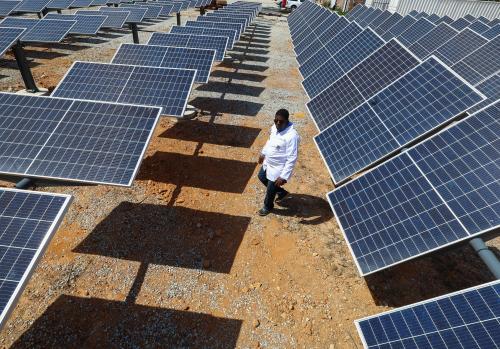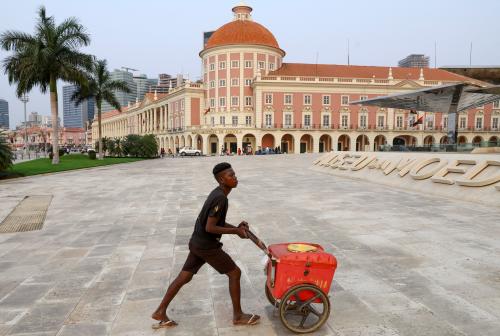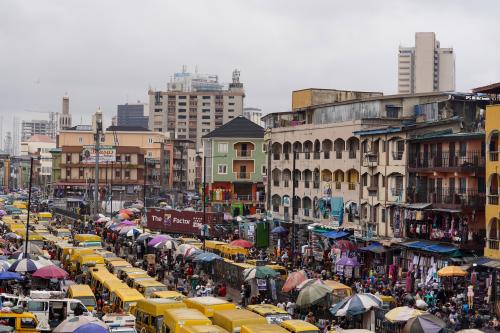This week, U.S. Secretary of State Rex Tillerson makes his first official visit to Africa, meeting with leaders in Chad, Djibouti, Ethiopia, Kenya, and Nigeria. According to State Department officials, Tillerson will be looking for ways to better position the U.S. to more effectively support economic development across the continent.
Economic development and trade are important parts of the United States relationship with sub-Saharan Africa through programs such as African Growth and Opportunity Act (AGOA). However, as Africa Growth Initiative Director Brahima S. Coulibaly said in a media briefing on the trip on March 5, the U.S. “risks falling behind” emerging market economies—especially China—when it comes to trade growth in sub-Saharan Africa.
Also in the briefing, Brookings Nonresident Fellow Witney Schneidman emphasized, “The European Union has been very active in creating free trade agreements to their economic partnership agreements. China, of course, has been very aggressive in making commercial loans available, and the U.S. is sort of still dealing with this position of a non-reciprocal trade agreement. So I think the time is now for more creative thinking in a number of areas.” For right now, Schneidman added, it seems that Tillerson’s trip has “no evident deliverables, and there’s no initiatives that are going to be announced.”
Indeed, over the last decade, trade between the United States and sub-Saharan African countries has stagnated or declined as seen in Figure 1. Exports from sub-Saharan Africa to the U.S. fell by 66 percent between 2006 and 2016 while imports grew by only 7 percent, even as overall imports rose by 56 percent.
Figure 1: Global trade with sub-Saharan Africa
On the other hand, trade with several emerging economies grew significantly during that time period with imports from China, India, Indonesia, Russia, and Turkey all doubling between 2006 and 2016. Similarly, exports to India, Indonesia, and Russia doubled during the period as well.
Though old partners still remain strong. For example, the European Union remains the region’s largest trading partner, accounting for 25.5 percent of imports and 23.2 percent of exports. Even as trade with other emerging economies has increased, the United States, European Union, and China remain important trade partners, accounting for almost 50 percent of all exports from sub-Saharan Africa.
To learn more about options for AGOA and the future of U.S.-Africa trade, see Post-AGOA: Moving to a reciprocal US-Africa trade agreement.
On Thursday, January 11, the Africa Growth Initiative at Brookings launched its annual Foresight Africa report, highlighting key priorities for the region for 2018. Chapter six of the report, Reassessing Africa’s Global Partnerships: Approaches for engaging the new world order highlights how the region is engaging with the United States, European Union, and China. This post focuses on the changing trade patterns in sub-Saharan Africa and the rise of new trade partners such as India, Turkey, and Russia.





Commentary
Figure of the week: Africa’s new trading partners
March 7, 2018